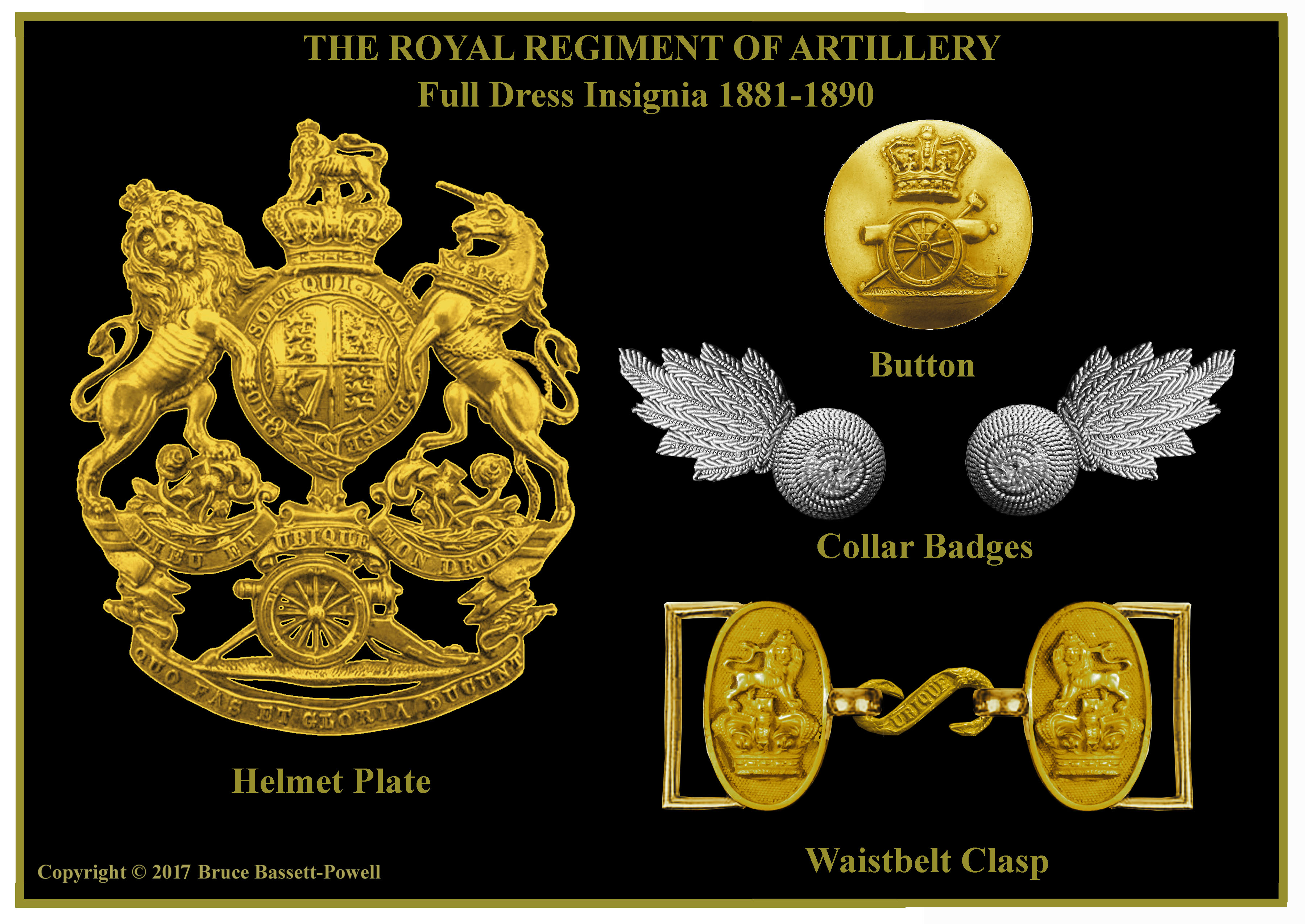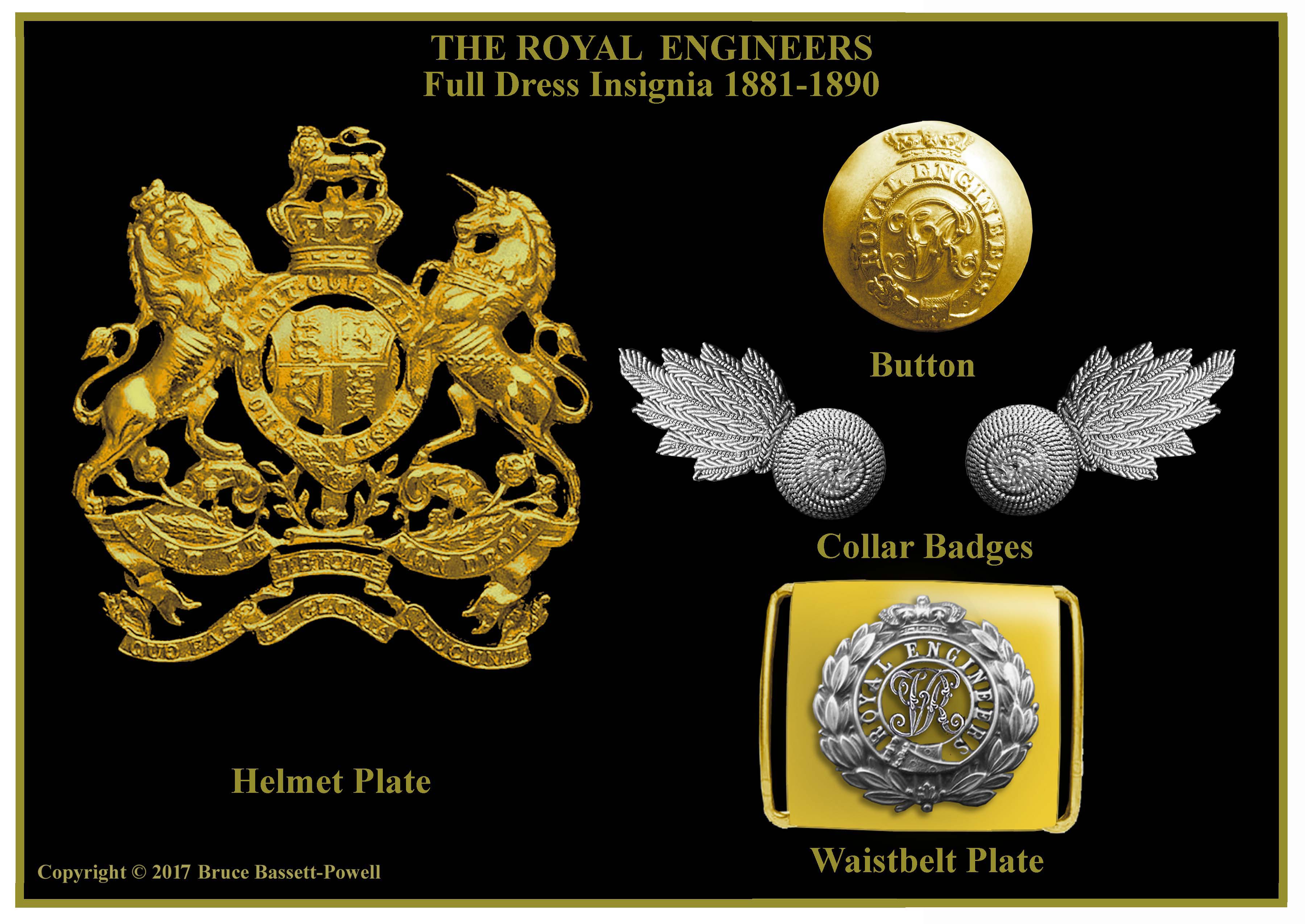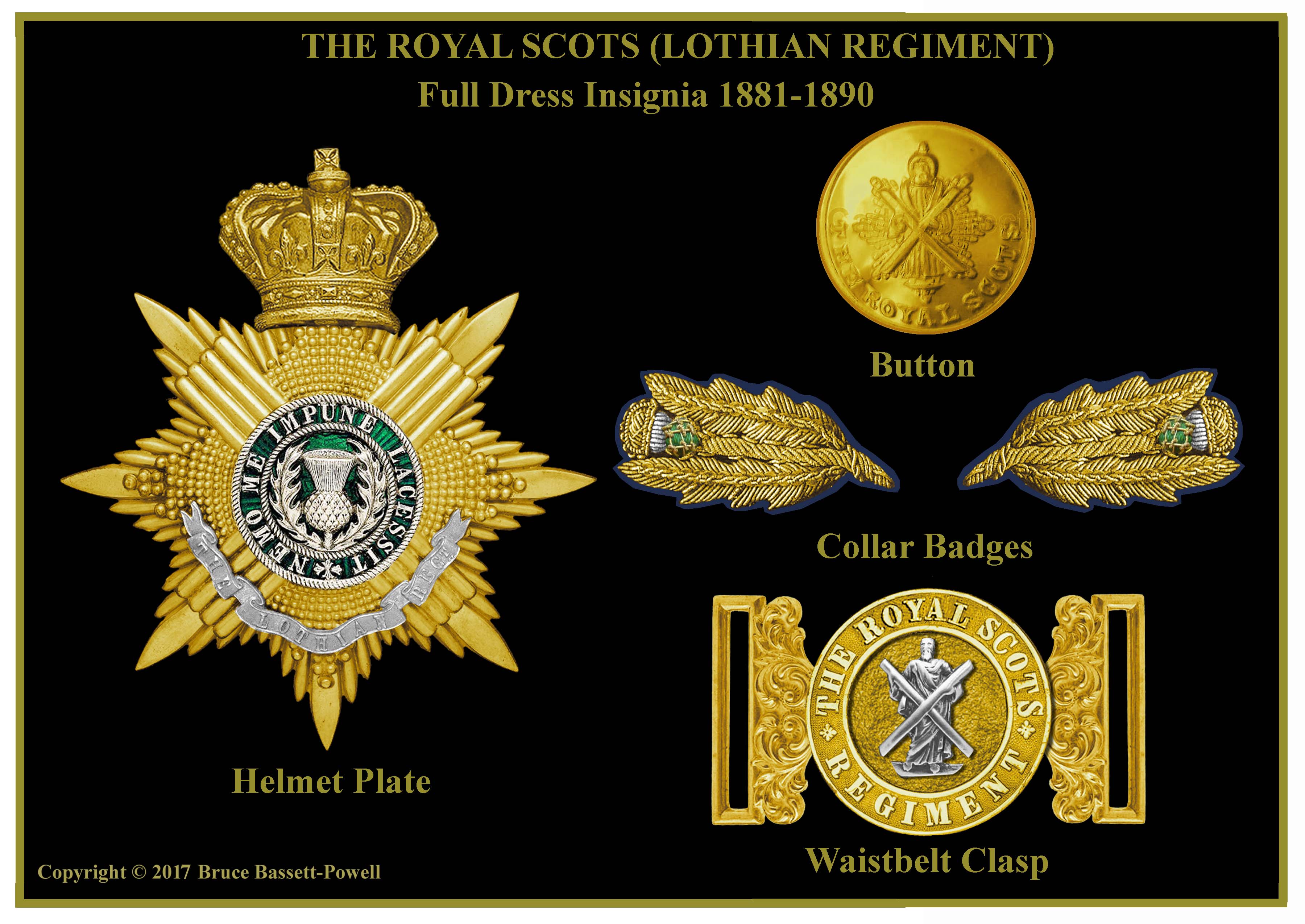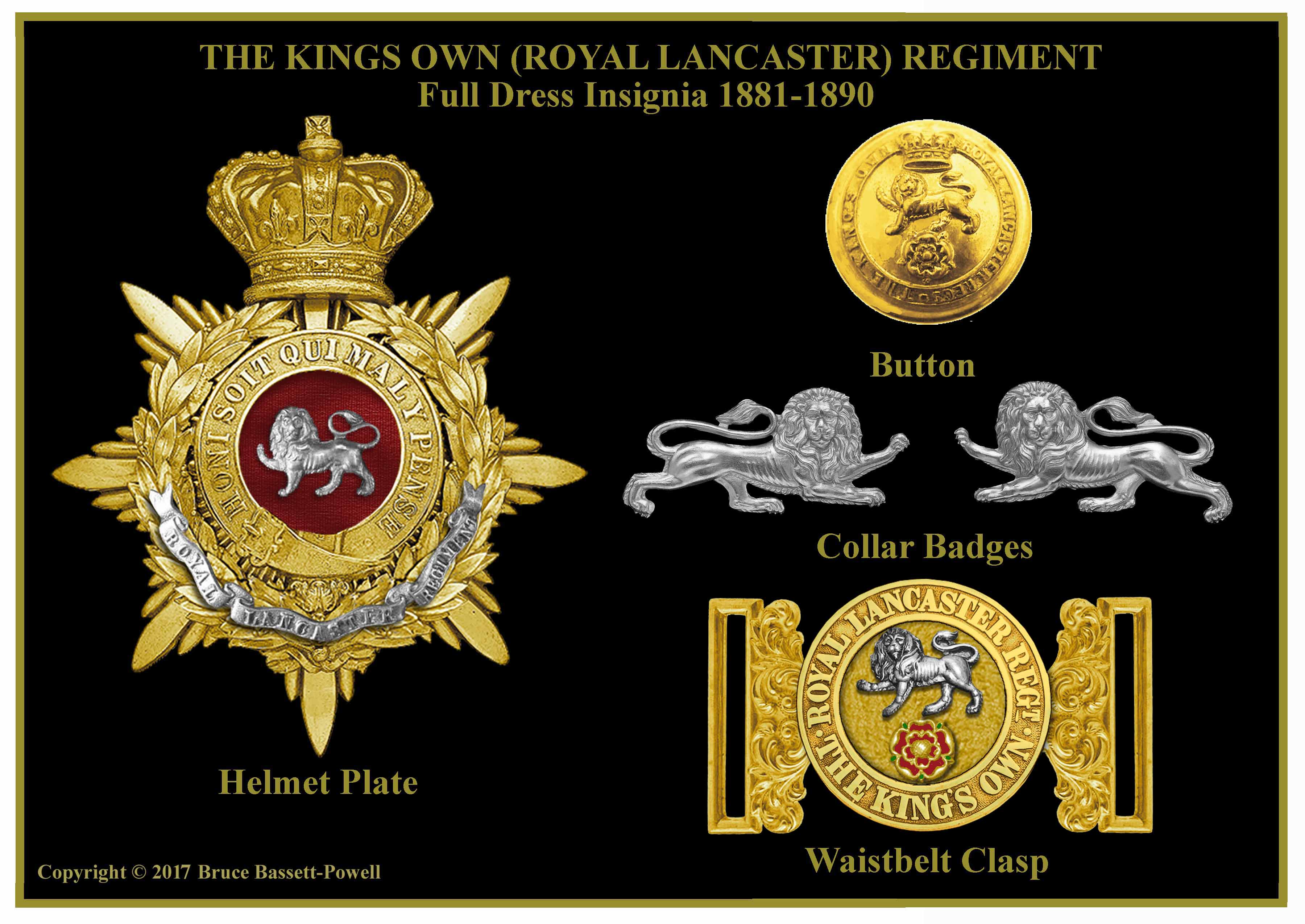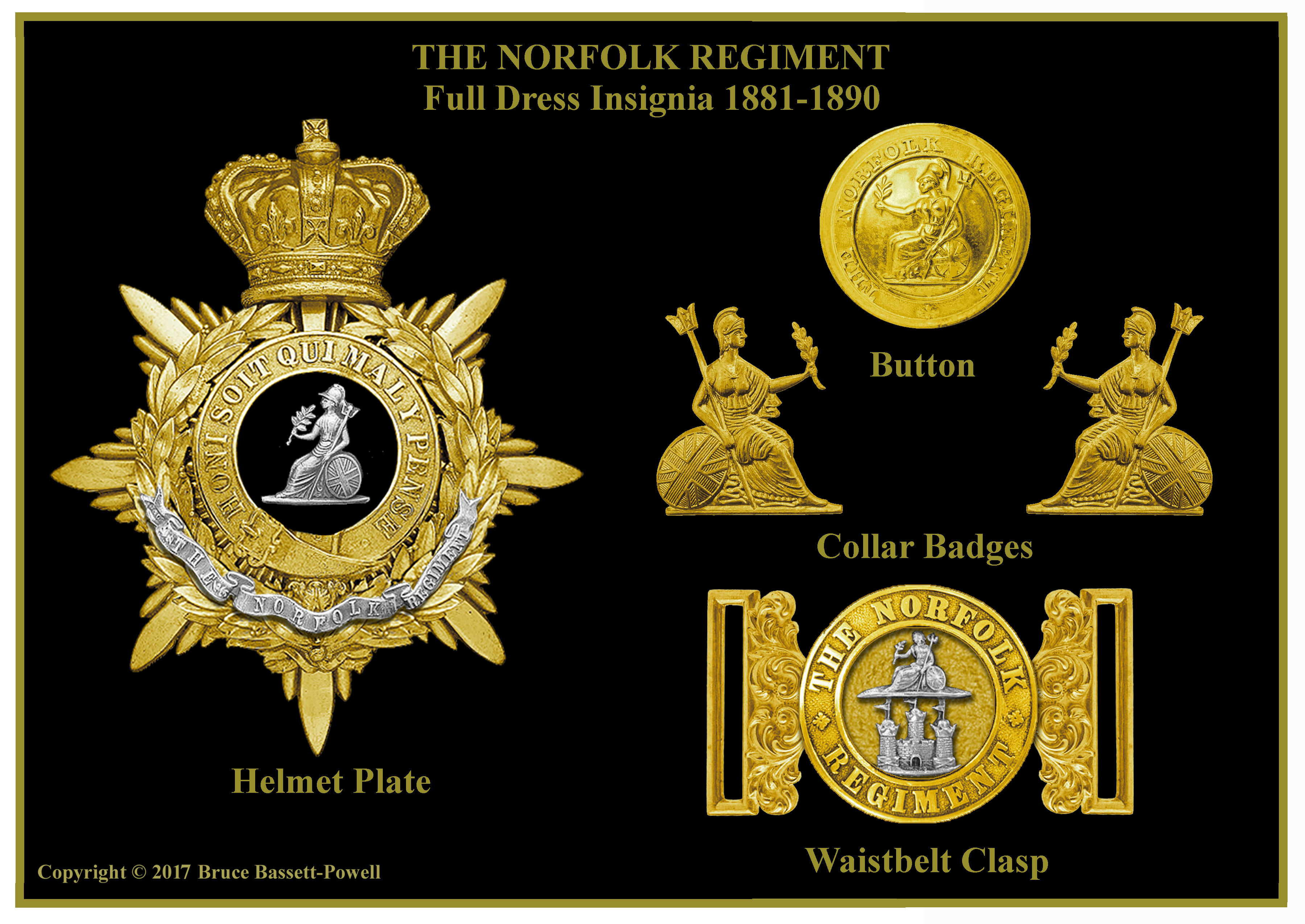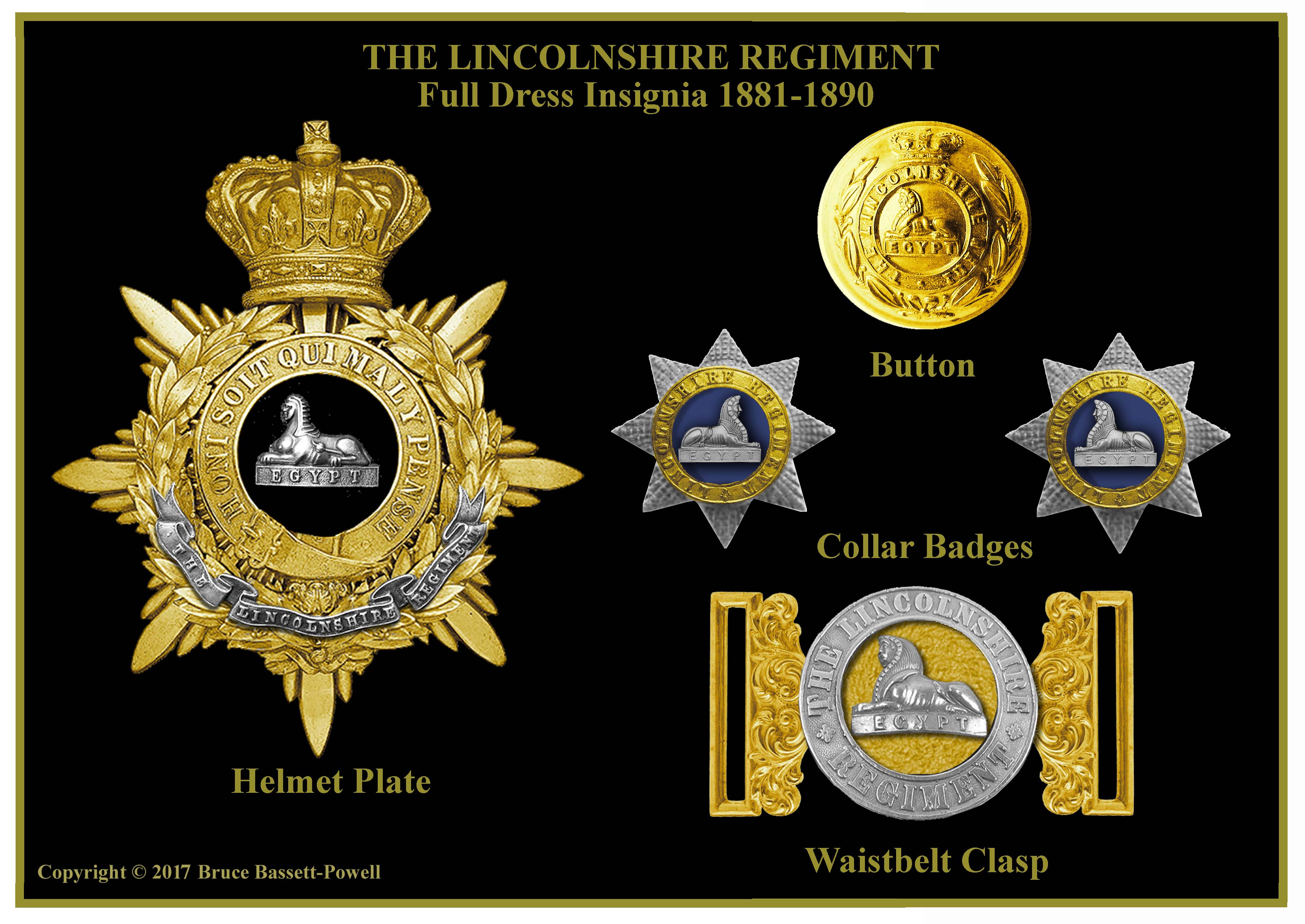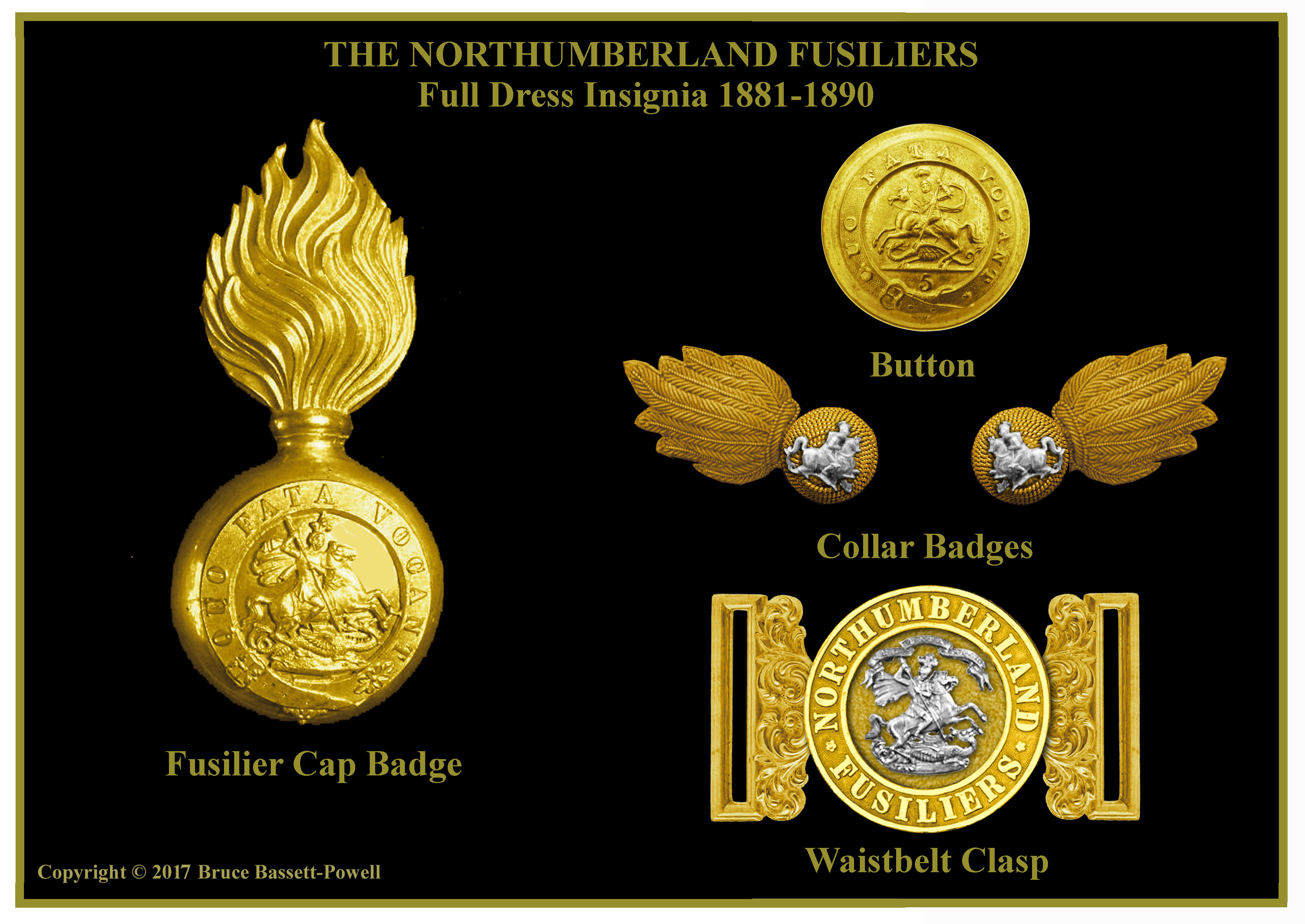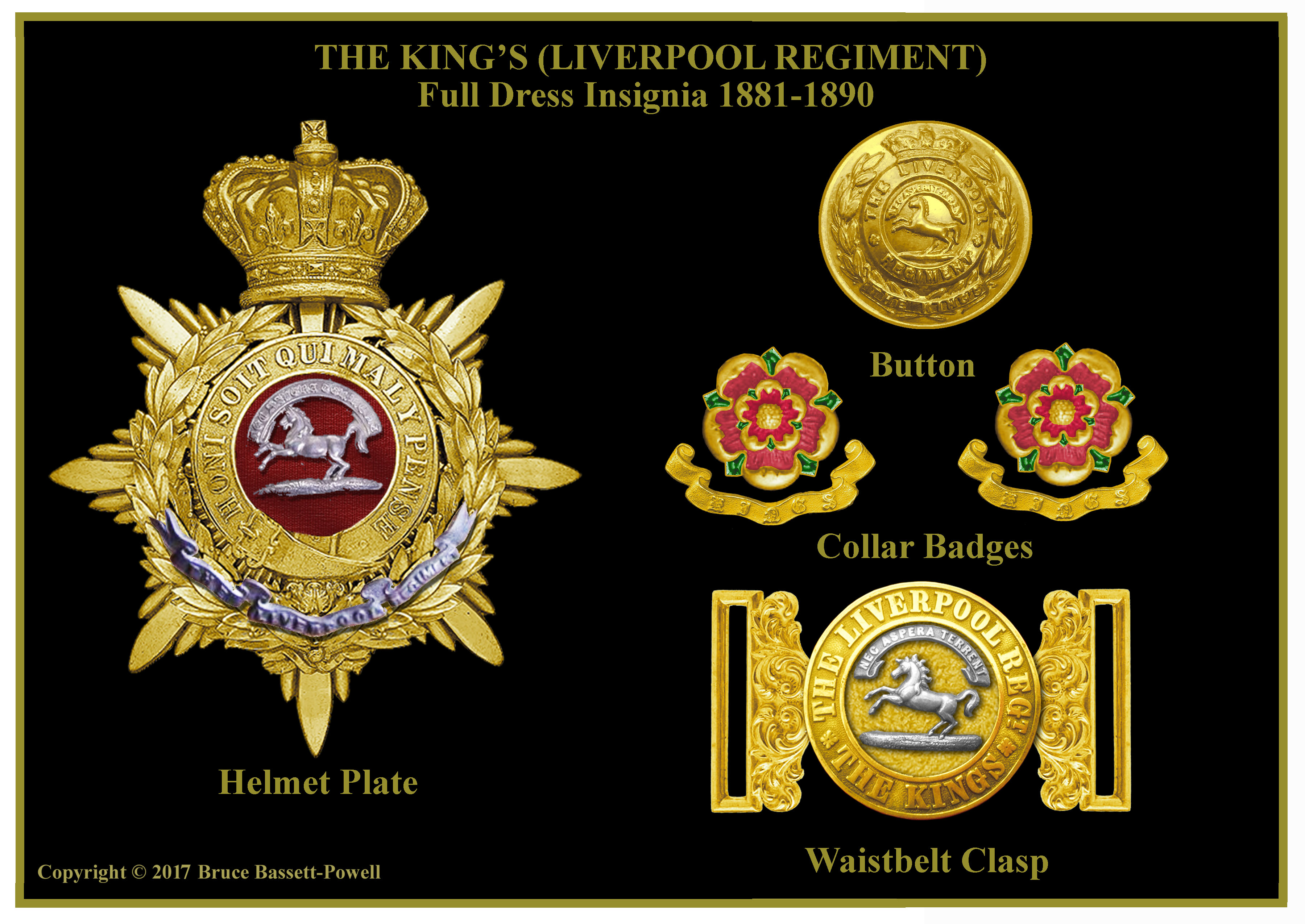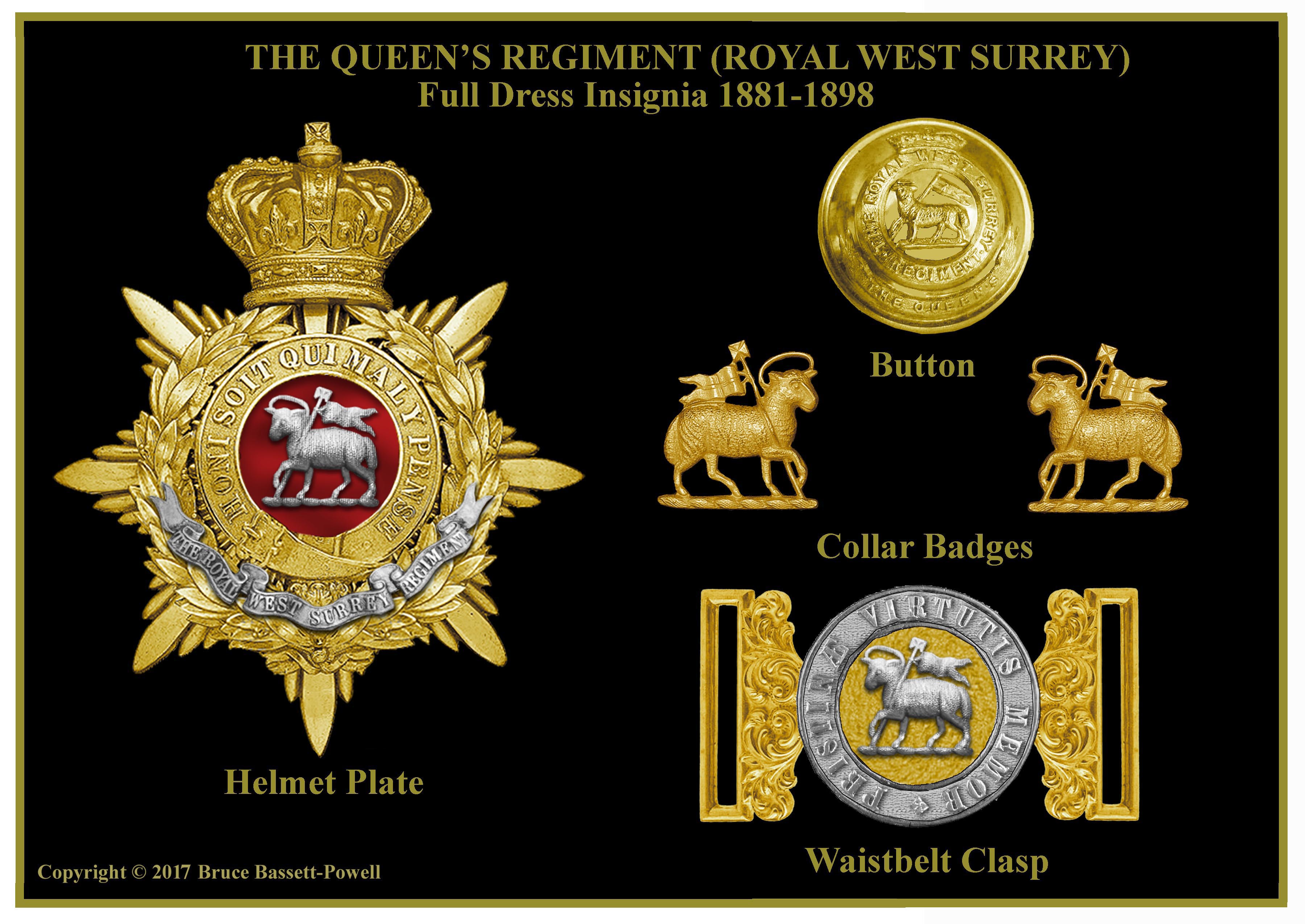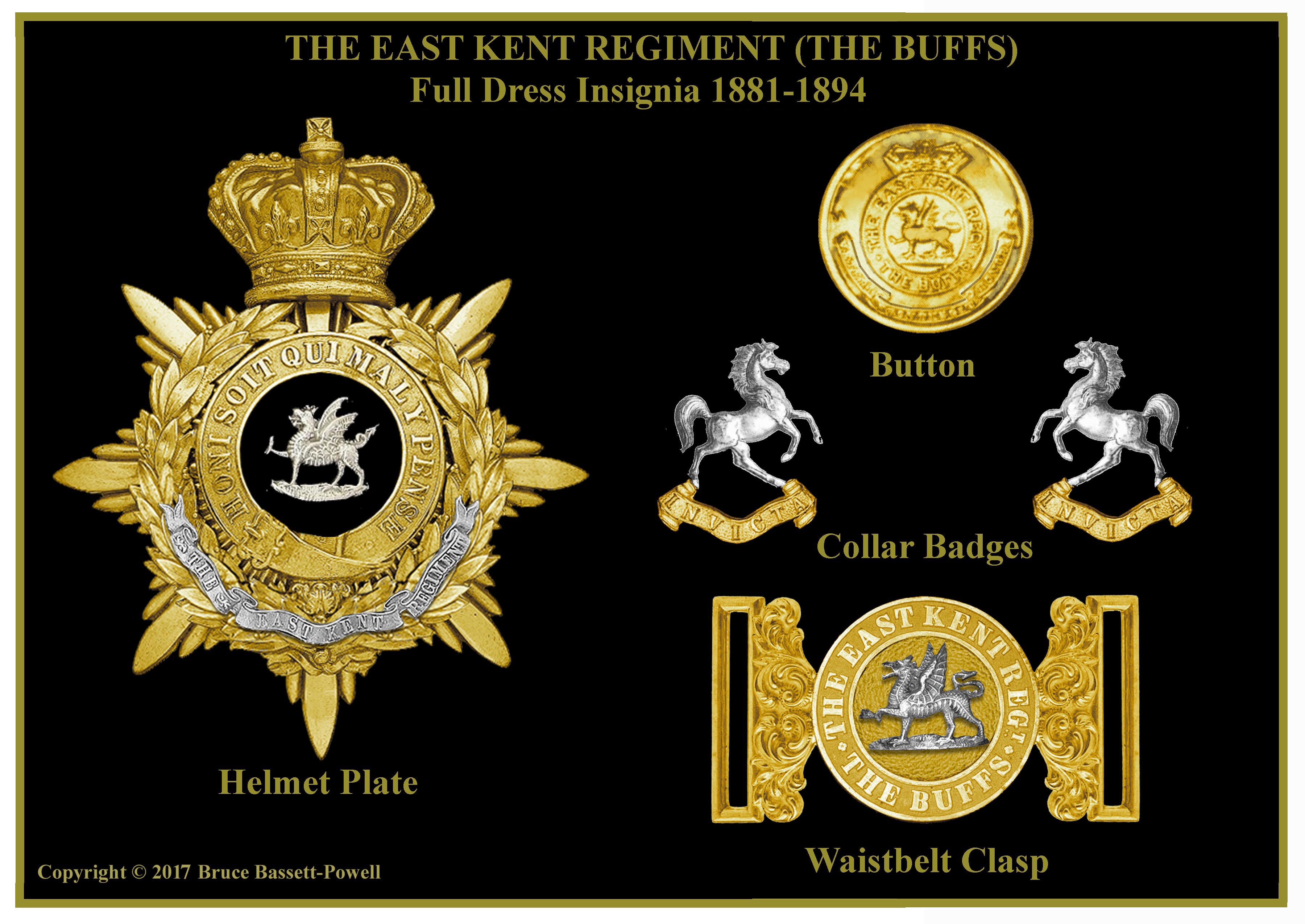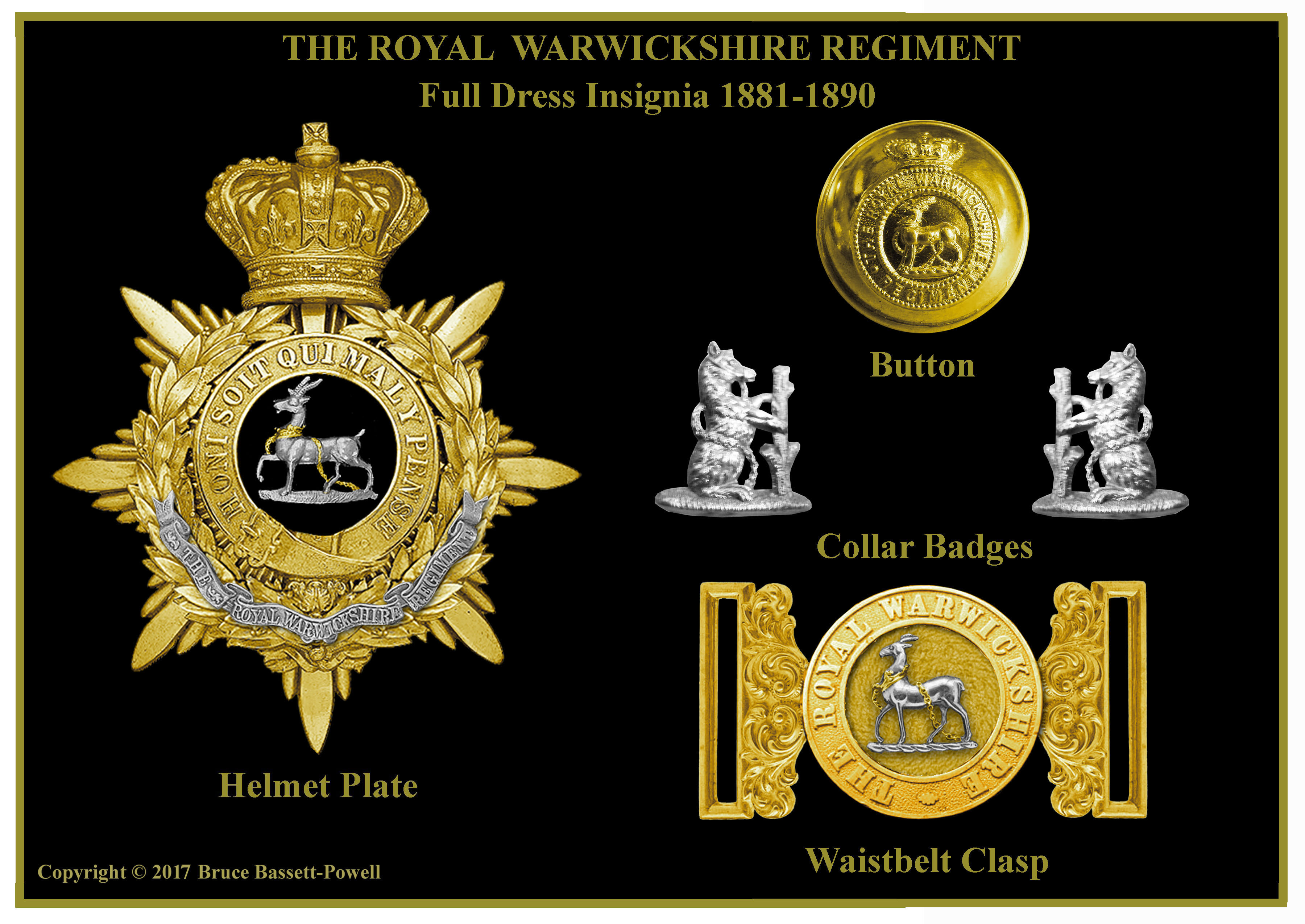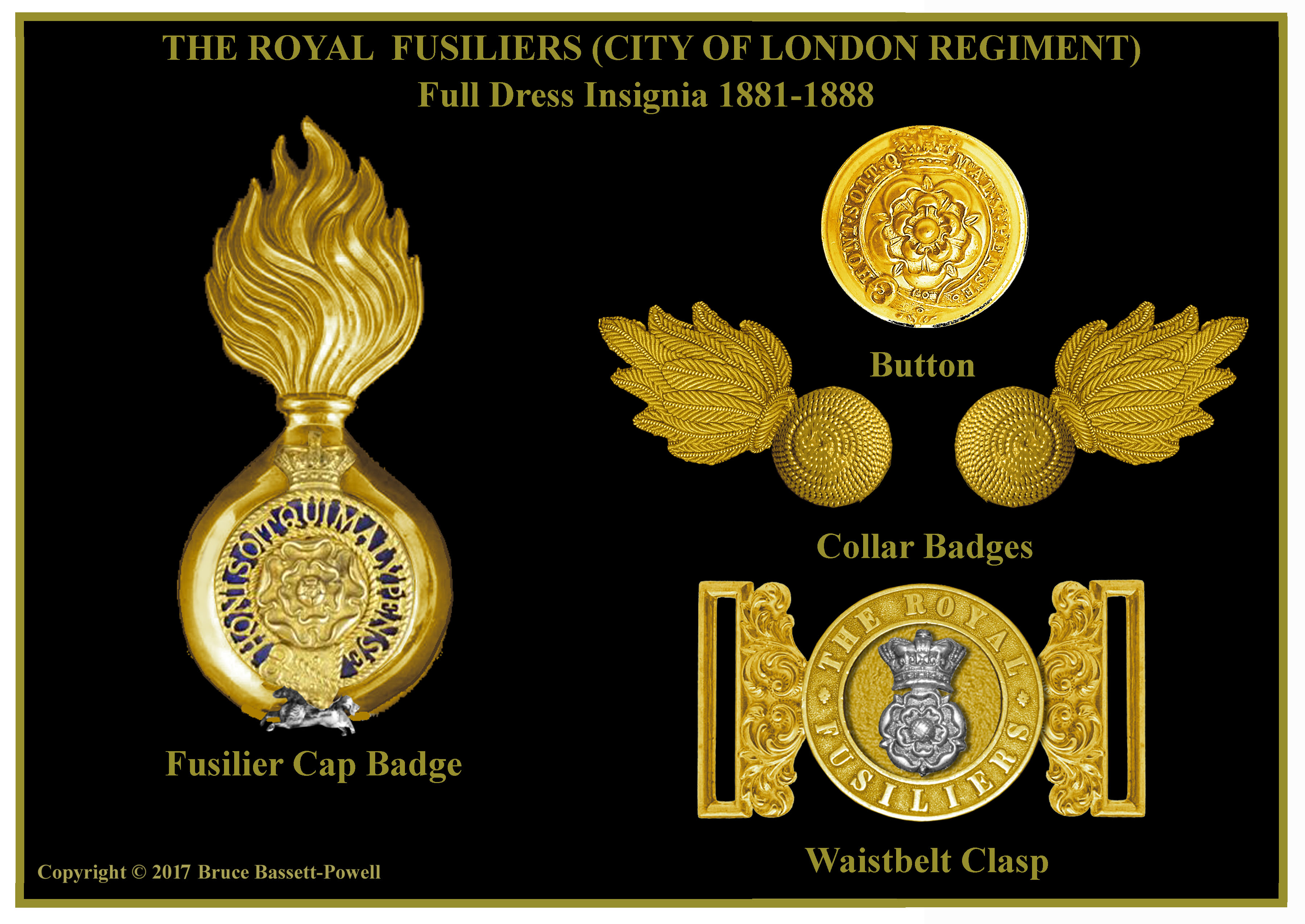The Royal Regiment of Artillery. The badge of the Royal Arms and supporters with a cannon, was granted in 1832, along with the mottoes Ubique (Everywhere) and Quo Fas et Gloria ducunt (That right and glory lead). From 1834 a grenade was worn on the shoulder strap and then on the collar of the shell jacket in 1838.
The Corps of Royal Engineers. The badge of the Royal Arms and supporters was granted in 1832, along with the mottoes Ubique (Everywhere) and Quo Fas et Gloria ducunt (That right and glory lead). A grenade was worn as a skirt ornament from 1824 and on the collar of the shell jacket from 1838.
The Royal Scots Formerly the 1st of Foot. Indisputably the longest serving British Army regiment since 1633, from 1743, The Royal Scots (for a short time from 1881, the Lothian Regiment) bore on their Colours the Royal Cypher within the Collar of the Order of the Thistle with the badge appendant. From 1881, the officers adopted cap and collar badges based on the Star of the Order of the Thistle that initially were identical to the badges worn by officers of the Scots Guards.
The Queen’s Formerly the 2nd of Foot. An unadorned lamb, whose origin is obscure, was the ancient badge of the Queen’s. Over time it took on the form of the heraldic Paschal Lamb, with regimental tradition suggesting it represented the family of the Portuguese Princess, Catherine of Braganza, but it seems more likely to have been seen as a suitable Christian symbol for a regiment destined to defend Tangiers from infidels.
The Buffs Formerly the 3rd of Foot. A green dragon was referred to in 1747 as the ancient badge of this regiment. Its origin is lost in antiquity, but probably traces back to the Trained Bands of London from which the regiment was raised. Another possible source was a famous dragon taken from the Mosque of St Sophia during the crusades and placed at Ghent, where the regiment was based in 1707. The prancing horse "INVICTA" is an ancient Kentish symbol.
The King’s Own Formerly the 4th of Foot. The Lion of England was the ancient badge of the King’s Own, having been granted to them by William III as a reward for their services after his landing in England in 1688. From 1881, the Red Rose of Lancaster was adopted by the Regular battalions of the regiment. It was an old badge of the 1st Royal Lancashire Militia.
The Northumberland Fusiliers Formerly the 5th of Foot. The origin of St George and the Dragon emblem worn by the Northumberland Fusiliers is unknown, but it was displayed on the colours in 1797. A grenade became the supporting insignia when the regiment were titled as fusiliers in 1836.
The Warwickshire Regiment Formerly the 6th of Foot. The Antelope was recorded in the clothing regulations of 1747 as the Warwickshire Regiment’s ancient badge. The Bear and Ragged Staff was the old badge of the Warwick Militia and dates back to the noble Neville Family of ‘Kingmaker’ fame.
The Royal Fusiliers Formerly the 7th of Foot. The badge of the United Red and White (Tudor) Rose within the Garter with Crown over it was decreed for the Royal Fusiliers in the Regulations for Clothing and Colours of 1747, along with the White Horse of Hanover and the motto Nec Aspera Terrent (Nor do difficulties deter us). A grenade marking the regiment’s specialised role as fusiliers escorting the Royal Artillery train.
The Norfolk Regiment Formerly the 9th of Foot. The figure of Britannia was the distinctive badge of the Norfolk Regiment, but its precise origin is sometimes confused. The earliest known references confirm it as an honour awarded the battle of Almanza in 1707. The honour was formally confirmed in 1800, long after usage had become firmly established on various accoutrements
The King’s (Liverpool) Regiment Formerly the 8th of Foot. Uniquely in 1716, the White Horse of Hanover and the motto Nec Aspera Terrent (Nor do difficulties deter us) was directed to be worn within the Garter on the Colours of the King’s regiment by King George I. Additionally the Red Rose, an old badge of the 2nd Royal Lancashire Militia, was worn for a time after 1881.
The Lincolnshire Regiment Formerly the 10th of Foot. The Sphinx superscribed ‘Egypt’, commemorates the services of the regiment in Egypt, in 1801, and was authorised in July 1802.
Page 1
REVISED
APRIL 21ST
REVISED
APRIL 21ST
REVISED
APRIL 21ST
REVISED
APRIL 21ST


